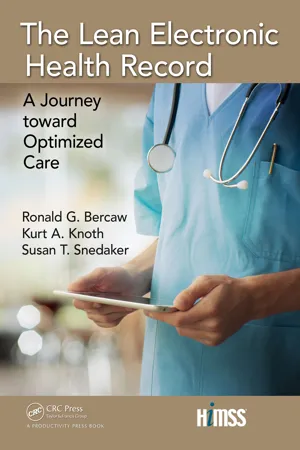Testing
Testing in computer science refers to the process of evaluating software or hardware to identify errors, bugs, or other issues. It involves running the program with various inputs to ensure that it behaves as expected and meets the specified requirements. Testing is crucial for ensuring the reliability, functionality, and performance of computer systems and applications.
5 Key excerpts on "Testing"
- Susan M. Houston(Author)
- 2021(Publication Date)
- Productivity Press(Publisher)
...Expected deliverables from the Testing phase include test scripts, test scenarios, test reports, test plans, and how test incidents will be reported and managed. TIP The National Institute of Standards and Technology (2010) report notes that catching software “bugs” before a system is released enhances security from hacker exploitation. As cybersecurity becomes more important over the years, Testing is being expanded beyond validating just a system's functionality. The concept of software bugs is related more to custom software development projects as opposed to the implementation of a commercial off-the-shelf (COTS) product, but there are times when customers find bugs in COTS software and report them to the vendor. Organizations that develop software or support software systems often have a specific person or team who focuses on Testing. Those doing Testing need to understand the requirements from specific functionality to workflows, or how the system will be used. They also need to be aware of the dataflows, or how data will flow through integration with other systems, or within the system itself. The training testers on how to use the system should occur as early as possible in the project schedule. The test team should review the requirements in detail to ensure they will all be included in the Testing process, either through detailed test scripts or in broader Testing scenarios. Testers should also meet with users to ensure that their workflows are addressed in the process. These activities help the testers develop the scripts, scenarios, and the expected outcomes for each. There are a variety of Testing types that are possible for software projects. How much Testing and what types are needed for individual projects are highly dependent on the project itself and the amount of time available for Testing...
- eBook - ePub
Software Engineering for Embedded Systems
Methods, Practical Techniques, and Applications
- Robert Oshana, Mark Kraeling(Authors)
- 2019(Publication Date)
- Newnes(Publisher)
...Tandem 6.9 Using Regression Testing to Ensure Unchanged Functionality 6.10 Unit Test and Test-Driven Development 6.11 Automatically Generating Test Cases 7 Setting the Standard 7.1 The Terminology of Standards 7.2 The Evolution of a Recognized Process Standard 7.3 Freedom to Choose Adequate Standards 7.4 Establishing an Internal Process Standard 8 Dealing With the Unusual 8.1 Working With Autogenerated Code 8.2 Working With Legacy Code 8.3 Tracing Requirements Through to Object Code Verification (OCV) 9 Implementing a Test Solution Environment 9.1 Pragmatic Considerations 9.2 Considering the Alternatives 10 Summary and Conclusions Questions and Answers Further Reading 1 What Is Software Test? There is some inconsistency in how the word “test” is used in the context of software development. For some commentators “software test” implies the execution of software and the resulting confirmation that it performs as was intended by the development team—or not. Such a definition views the inspection or analysis of source code as a different field; that is, one to be contrasted with software test rather than a branch of it. For the purposes of this chapter the Oxford English Dictionary ’s definition of the word “test” is applied: “a procedure intended to establish the quality, performance, or reliability of something, especially before it is taken into widespread use.” Any activity which fits that definition can therefore be regarded as a software test, whether it involves code execution or not. The generic term “static analysis” is used to describe a branch of software test involving the analysis of software without the execution of the code...
- eBook - ePub
- Mano Paul(Author)
- 2016(Publication Date)
- CRC Press(Publisher)
...This is why security Testing (covered later) is necessary, and since security is another attribute of quality, as is privacy and reliability, software that is secure can be considered as being of relatively higher quality. Testing can validate this. 5.4 Types of Software QA Testing The following section will cover the different types of Testing for software QA. It is important that you are familiar with the definition of these tests and what they are used for. 5.4.1 Reliability Testing (Functional Testing) Software Testing is performed primarily to attest to the functionality of the software as expected by the business or customer. Functional Testing is also referred to as reliability Testing. We test to check if the software is reliable (is functioning as it is supposed to) according to the requirements specified by the business owner. 5.4.1.1 Unit Testing Although unit tests are not conducted by software testers but by the developers, it is the first process to ensure that the software is functioning properly, according to specifications. It is performed during the implementation phase (coding) of the SDLC by breaking the functionality of the software into smaller parts and Testing each part in isolation for build and compilation errors as well as functional logic. If the software is architected with modular programming in mind, conducting unit tests are easier because each of the features is already isolated as discrete units (high cohesiveness) and has few dependencies (loose coupling) with other units. In addition to functionality validation, unit Testing can be used to find quality of code (QoC) issues as well. By stepping through the units of code methodically, one can uncover inefficiencies, cyclomatic complexities, and vulnerabilities in code. Some common examples of code that are inefficient include dangling code, code in which objects are instantiated but not destroyed, and infinite loop constructs that cause resource exhaustion and eventually DoS...
- John Bartlett(Author)
- 2017(Publication Date)
- Routledge(Publisher)
...8 Testing for quality Testing is an activity that is fundamental for proving quality. It seeks to demonstrate whether a deliverable or deliverable component works to the desired specifications. It is not just about this, though. It is also about whether expectations have been met. The latter is not often appreciated by those involved in Testing, and I have many experiences of this being a cause for considerable argument. Some testers will openly state that their role is not to test for something working as expected. This is a big mistake, and is symptomatic of a poor mindset towards quality. If expectations have been managed well during the execution of a project then there should not be any mismatch of expectations. However, some projects tend to have more indefinite deliverables than others – software development projects, for example. In this case, prototyping is an added safeguard to the risk of mismatches of expectations during final Testing. Companies and organisations take various approaches to Testing and these approaches will vary depending on the project. Engineering projects, for example, may require extensive and detailed Testing of components, with the setting up of a sophisticated test bed. IT rollout projects may require a pilot installation to iron out any problems prior to mass rollout. Aeronautical projects may require the building of a prototype aircraft in order to demonstrate proof of concept. Software development projects may require a period of parallel running before replacing one system with another. Outsourcing projects might benefit from the construction of a model office environment to test a new workplace. Testing, therefore, comes in various guises. It does not have to be a discrete phase in a project, but can be ongoing right from project outset. The purpose of this chapter is not to provide guidance on which Testing to use, but to explore it from a quality perspective...
- eBook - ePub
The Lean Electronic Health Record
A Journey toward Optimized Care
- Ronald G. Bercaw, Kurt A. Knoth, MBA Snedaker(Authors)
- 2017(Publication Date)
- Productivity Press(Publisher)
...An error may be something that is built according to specifications but does not work as designed. In either case, you should define what a critical, high, medium, and low priority defect (and/or error) is and how you will address these. For example, you may determine that all critical and high defects and errors cause Testing to stop until resolved. For medium and low, you may batch them into a development cycle at the end of a test phase, such as at the end of unit Testing. In general, you should have test plans that define what is to be tested, at what stage it will be tested (unit or integrated, for example), who will test it, how results will be documented, and how issues will be addressed. Testing is an iterative process, but issues should become far less numerous the further into the Testing process you get. Figure 9.1 shows the conceptual steps for Testing and functional requirement validation (sometimes used interchangeably with user acceptance Testing). For more on software Testing in general, see the Resources section at the end of this chapter. Figure 9.1 Testing phases. Unit and Functional Testing Your functional and technical requirements form the foundation of unit and functional Testing. For the purposes of the EHR, a unit might be a specific module such as an ED module or your revenue management module. Functional Testing, of course, tests the function of that portion of the software. This is the initial phase of Testing that makes sure the build is accurate and complete. Some elements that should be tested during this phase are listed here along with questions you should be asking and answering. Are all major functions present? This is a very basic question and should easily be answered...




